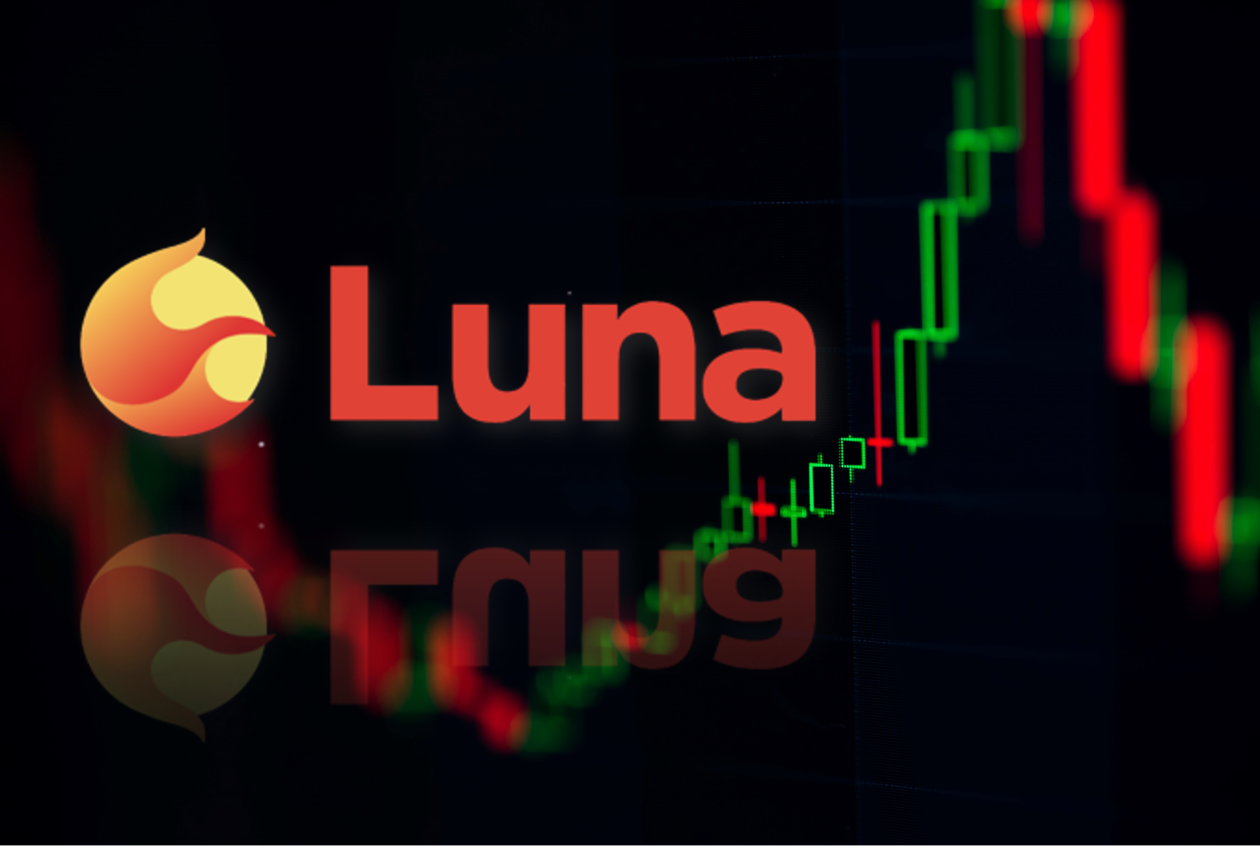In this issue
- Terra’s new moon: Houston, we have a problem
- Crypto markets: Is the worst over?
- China’s CBDC giveaways: Two birds, one stone
From the editor’s desk
Dear Reader,
If one thing that differentiates the world of cryptocurrencies from traditional finance is trustlessness, something that binds them is confidence.
The lack of centralized intermediaries in the trustless crypto economy may be a source of remarkable resilience, innovation and even strength. But without confidence in the overall architecture of that economy, it’s every bit as vulnerable to panic and collapse as the traditional financial system it gamely sought to challenge when it emerged in the wake of the global financial crisis 13 years ago.
If anyone remains in any doubt about this, just take a look at the recent implosion of stablecoin TerraUSD (UST) and its governance token, LUNA. And for further evidence, we need look no further than the performance of LUNA since its reincarnation on the Terra 2.0 blockchain last Saturday.
Happily, it appears that despite lingering doubts over whether stablecoins can be trusted to live up to their name, the broader crypto market is enjoying a small measure of relief following a recent period in the doldrums.
Confidence may remain in short supply right now, but when it comes to the fundamentals of the biggest cryptocurrencies, many of which offer technology that looks unmistakably like the future of money, it persists.
And it’s certainly being projected by China, where authorities are gearing up for more giveaways of digital yuan — or e-CNY, as it’s officially known — in a two-pronged effort to get more people using it and to stimulate the country’s Covid-hit economy.
Uptake of e-CNY has been steadily increasing, if official figures are to be believed. According to the latest data available from the country’s central bank, the number of e-CNY users more than doubled to 261 million between October and December last year.
That suggests more than 18% of China’s vast population is using it. And that looks like an expression of confidence in a digital architecture for the future of money, even if it’s not the decentralized financial future in which the crypto community continues to have faith.
Until the next time,
Angie Lau,
Founder and Editor-in-Chief
Forkast
1. LUNA liftoff fizzles

Image: Envato Elements
By the numbers: Terra 2.0 — over 5,000% increase in Google search volume.
Terraform Labs’ attempted revival of LUNA — the token created to maintain the U.S. dollar peg for collapsed stablecoin TerraUSD (UST) — has been anything but smooth. The new LUNA lost 70% of its value shortly after the launch of the Terra blockchain’s replacement — Terra 2.0 — on Saturday. It is now at US$7.17 during Asia trading hours Wednesday after peaking at US$18.87 on its launch day, according to CoinGecko.
- The relaunch of LUNA came after a 65.5% governance vote in favor of a proposal by Terraform Labs co-founder Kwon Do-hyung — better known as Do Kwon — to create the new Terra 2.0 chain last week. Among those opposing the plan was decentralized finance (DeFi) project Lido Finance’s decentralized autonomous organization (DAO), which rejected the proposal by a majority of almost 95%.
- The launch of Terra 2.0, which does not feature an algorithmic stablecoin, saw new LUNA coins airdropped to holders of the crashed tokens — now renamed LUNA Classic (LUNC) and Terra Classic USD (USTC). Under the plan, holders of the old coins received 700 million, or 70%, of the total supply of new LUNA tokens.
- The new LUNA coins are now being traded on Kraken, Huobi and Bybit, and Binance — the world’s biggest crypto exchange — has listed them in a separate trading zone for new tokens associated with heightened risk and volatility.
- Terra 2.0’s critics have raised questions over how the project will support itself without a stablecoin such as UST. “The main concern is that the whole Terra ecosystem functioned based on [UST],” said Kevin Ahn, a South Korean DeFi expert. “When [UST] is no longer a priority, the ecosystem built on Terra won’t be compatible with Terra 2.0.”
Forkast.Insights | What does it mean?
“Credibility is the ultimate currency,” tweeted Binance Chief Executive Changpeng Zhao shortly after Terra 2.0 debuted. If that’s true, then the creators of the replacement for the failed previous version have a lot of work to do. Although thousands of traders flocked to the Terra blockchain hard fork, many are still wondering if the project can ever recover.
First and foremost are investors, particularly those in co-founder Do Kwon’s native South Korea. Investors in that country bore the brunt of Terra’s collapse, with Hashed, a Seoul-based venture fund, losing US$3.5 billion. South Korean regulators are now, rightly, launching inquiries into what went wrong.
The National Assembly in Seoul has requested Do Kwon’s presence at several hearings, and some of the country’s biggest law firms have launched legal action against the Terraform Labs project. But perhaps the biggest test of credibility for Terra 2.0 will be in convincing other projects to take another punt on its creators. Rivals NEAR and Polygon have managed to lure nearly a dozen projects away from Terra, and more may well follow suit.
Then there’s the long shadow of UST, the algorithmic stablecoin that led to the project’s surging popularity and also its demise. Although Do Kwon has vowed not to revive the stablecoin, that hasn’t stopped Tron, a rival network, from doing so, helping it become the third-biggest blockchain in DeFi by total value locked. Do Kwon needs people to believe in the new Terra — but at what cost?
2. Ray of light

Image: Getty Images
By the numbers: Ethereum — over 5,000% increase in Google search volume.
Ethereum has risen more than 10%, and passed the US$1,900 mark on Wednesday, Hong Kong time, in a relief rally that has seen other major cryptocurrencies make gains following the collapse of stablecoin TerraUSD (UST). Ethereum was trading at US$1,938 at press time, according to CoinGecko.
- The world’s second-largest cryptocurrency fell to a low of US$1,721 last Friday after a seven-block reorganization was spotted on the proof-of-stake Beacon Chain, which was part of the Ethereum 2.0 upgrade.
- Cardano led market gains, rising almost 20% in 24 hours following the recent launch of the Iagon cross-chain bridge, which allows Ethereum-based USD Coin and ERC-20 IAG tokens to run on Cardano. Cardano’s native token, ADA, was trading at US$0.61 at press time, its highest level since May 12.
- Bitcoin is also seeing gains, rising 7.5% in the past week days and returning to above US$31,000 for the first time since mid-May. Bitcoin was trading at US$31,642 at press time.
- The crypto market lost almost 30% of its value in May amid the collapse of UST, plunging from a total capitalization of more than US$1.45 trillion on May 10 to under US$1.16 trillion two days later. The market’s capitalization rose to US$1.37 trillion mark today for the first time since May 18.
Forkast.Insights | What does it mean?
The crypto industry has been due some good news, especially after Bitcoin’s record-breaking eight-week losing streak. Ethereum’s rise can be partly attributed to its forthcoming “merge,” when the network’s proof-of-work consensus mechanism is exchanged for the vastly more energy-efficient proof-of-stake consensus.
But in reality, crypto’s increasing entanglement with the broader finance industry is the reason for the optimism. Last week, the S&P 500 index posted its biggest weekly gain since November 2020, bringing unexpected cheer to traders. That sentiment has crept into crypto, with prices seeing a positive reversal. Yet relief rallies such as these need to be viewed with caution.
Inflation and interest rates are continuing to rise and may continue to do so for the remainder of the year. That means risky assets such as tech sector equity and crypto are being swapped out of investor portfolios for bonds and energy stocks. Why? During times of uncertainty, investors prefer to invest in things they know, rather than things they don’t. Crypto has fallen out of favor and is unlikely to regain last year’s highs until the world shakes off the very real specter of recession.
3. Spend it to mend it

Image: Getty Images
The Chinese cities of Shenzhen and Guangzhou and the Xiong’an New Area, a special economic zone near Beijing, are distributing free e-CNY “red packets” containing a combined sum of up to 90 million digital yuan (US$13.5 million), to boost local consumption amid a gloomy economy exacerbated by Covid-19 lockdowns. Red envelopes are traditionally given in many Chinese communities to mark special occasions such as birthdays, weddings and the lunar new year.
- Amid preparations for the June 3 Dragon Boat Festival, Shenzhen authorities plan to distribute digital red envelopes containing a total of 30 million e-CNY — as China’s central bank digital currency (CBDC) is officially known — via Meituan, an online shopping platform. The money is accepted at 15,000 e-CNY-friendly shops in Shenzhen or online at Meituan. The giveaway is part of the city government’s plan to boost the local economy by distributing consumption vouchers worth 500 million yuan (US$74.8 million) by July.
- The Xiong’an New Area, in the Baoding part of Hebei Province, has been an e-CNY pilot area since 2019. Authorities there embarked upon another red envelope giveaway on Monday as part of a 50-million yuan (US$7.5 million) consumption stimulus plan. Residents can apply for free digital money online and use the e-CNY coupons in designated shops or on e-commerce platform JD.com.
- Authorities in Guangzhou’s Nansha district announced last week that they would hand out 10 million yuan (US$1.5 million) of e-CNY to boost the catering and retail industries, but an issue date has yet to be announced.
- Earlier this year, Shenzhen distributed 25 million yuan (US$3.7 million) of e-CNY red envelopes during the Spring Festival and 15 million yuan (US$2.2 million) in late April.
- The Caixin Purchasing Managers’ Index, a gauge of economic activity, dropped to 36.2 in April amid mass lockdowns in response to Covid outbreaks, indicating the weakest performance for China’s services sector in more than two years. Any index reading below 50 indicates a contraction of activity. According to government data, three provinces gave out stimulus vouchers worth more than 3.4 billion yuan (US$509 million) during the first four months of the year.
Forkast.Insights | What does it mean?
It hardly comes as a surprise that Chinese authorities are scaling up retail trials of the digital yuan, especially when the Politburo, the Chinese Communist Party’s third-highest decision-making body, pledged in April to bolster the country’s recovery amid the Covid pandemic, which has had devastating effects on industry and the economy. Testing e-CNY at the same time as delivering boosts to consumption is a win-win.
Meanwhile, an e-CNY retail trial is also making progress in Hong Kong. Joseph Chan, Hong Kong’s undersecretary for financial services and the treasury, said last week at a conference that the city’s de facto central bank and the People’s Bank of China had completed the first phase of e-CNY technical testing for cross-boundary payments.
During the next stage of testing, the Hong Kong Monetary Authority will seek the involvement of more banks and trial the use of the city’s Faster Payment System to top up e-CNY wallets, Chan said.
Although China may be shifting its attention to more urgent means to boost its economy, the pace of its CBDC rollout appears to remain very much on track as local governments continue their e-CNY giveaway sprees.




